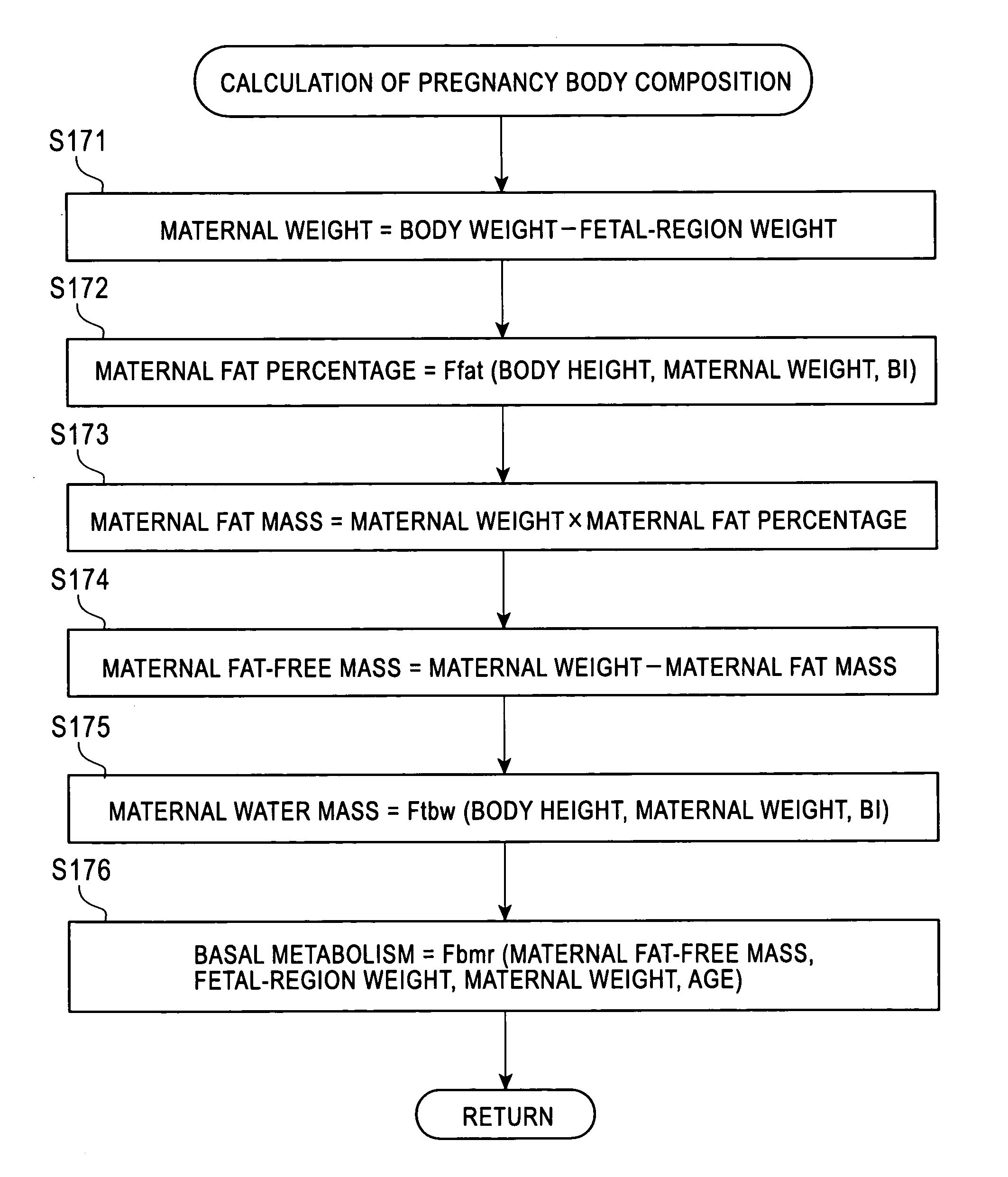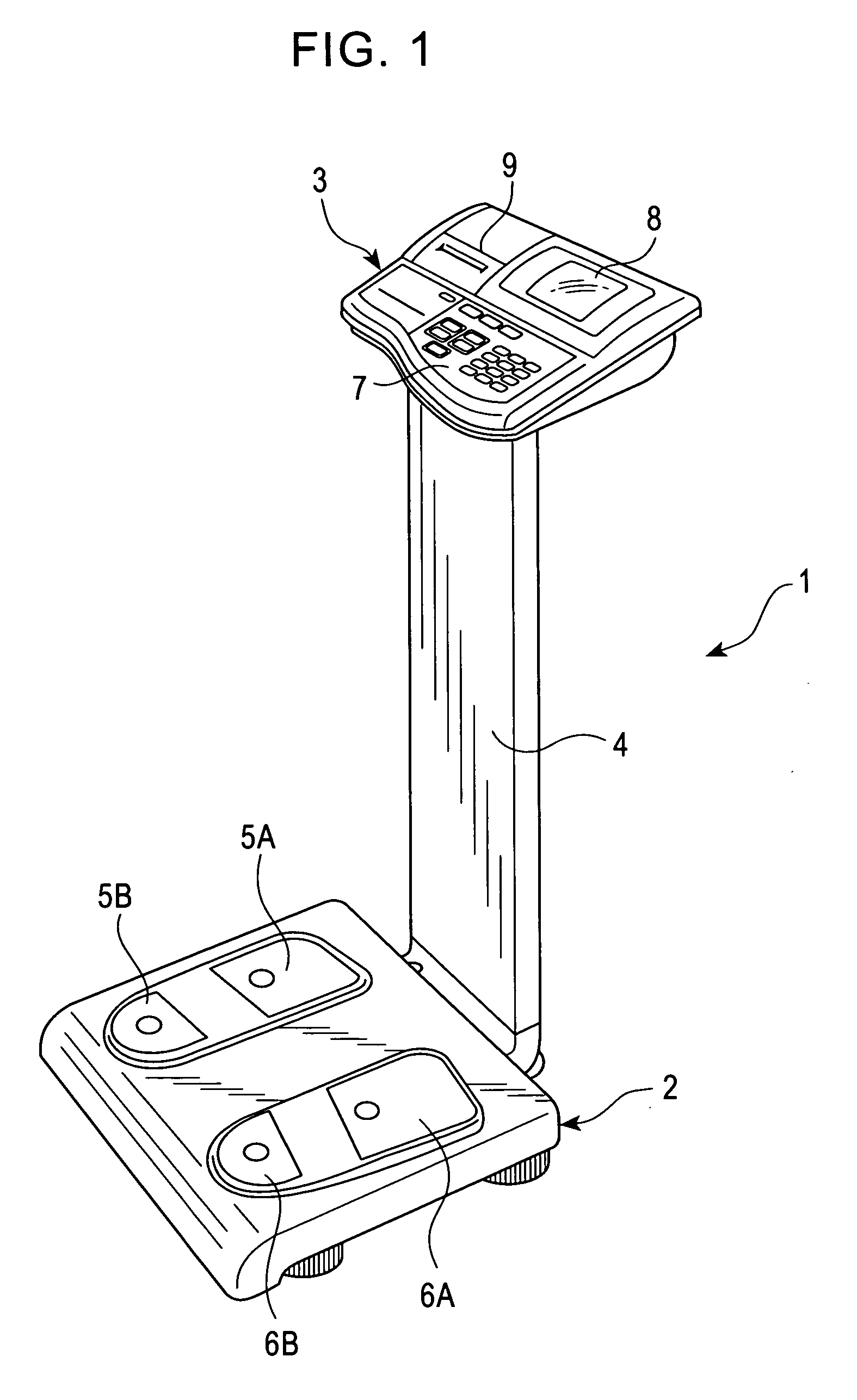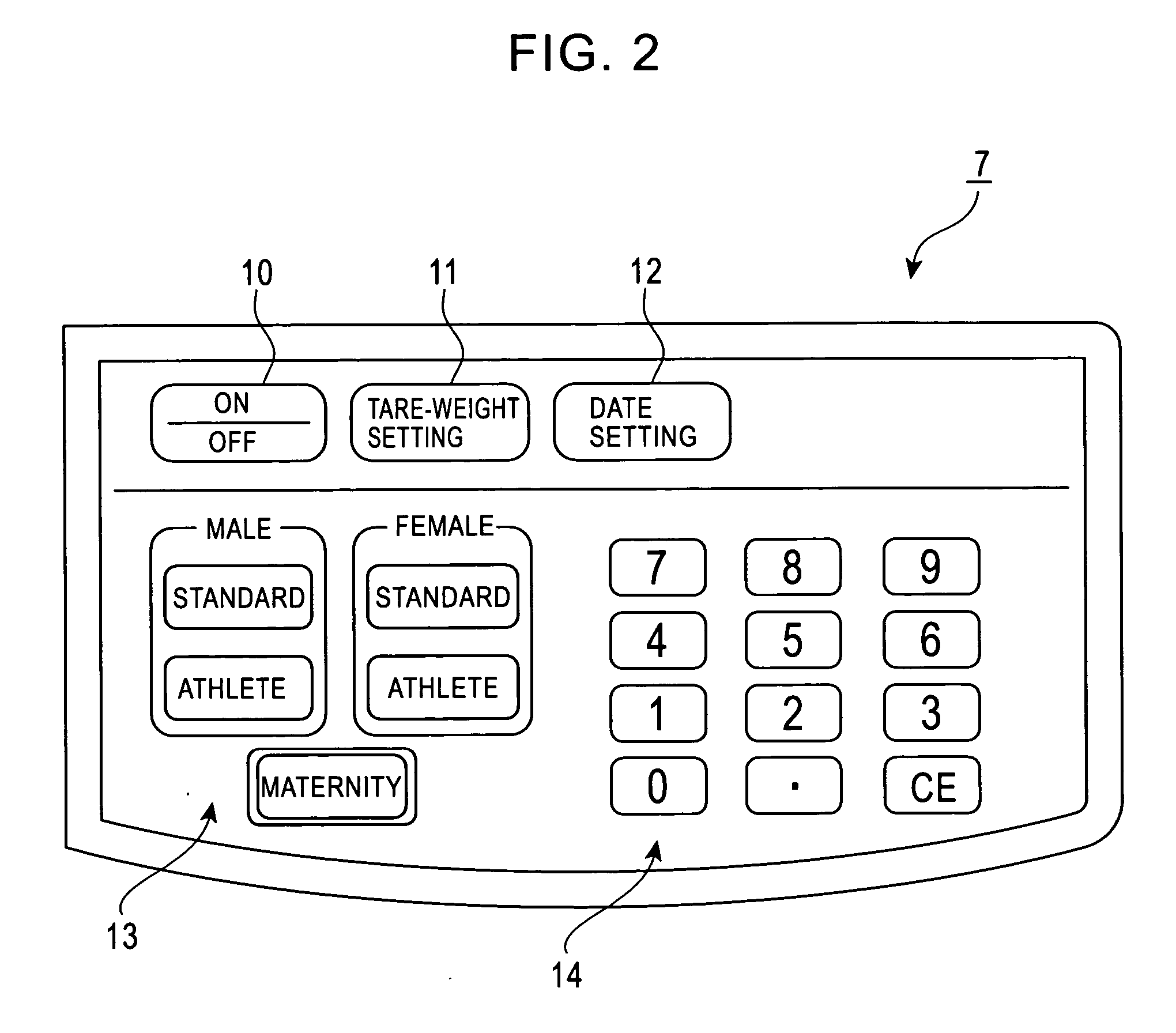Biological data measurement system for pregnant women
a biodata and measurement system technology, applied in the field of maternity biodata measurement system, can solve the problems of insufficiently measuring the necessary energy amount and the intake energy amount, the inquiry burden of the pregnant woman, and the inability to accurately calculate the necessary energy amount suitable for each individual, etc., to achieve the effect of increasing the energy expenditure of the increased fat-tissue, increasing the tissue-required energy amount, and increasing the fat-tissu
- Summary
- Abstract
- Description
- Claims
- Application Information
AI Technical Summary
Benefits of technology
Problems solved by technology
Method used
Image
Examples
first embodiment
[0104] With reference to FIGS. 1 to 9, a first embodiment of the present invention will now be described. The first embodiment is primarily based on the first aspect of the present invention.
[0105]FIG. 1 is a perspective external view showing a biodata measurement apparatus 1 incorporating a maternity biodata measurement system according to the first embodiment. FIG. 2 is an enlarged view showing a manual operation section of the biodata measurement apparatus 1. FIG. 3 is a schematic block diagram showing an electric circuit configuration of the biodata measurement apparatus 1. FIG. 4 is a flowchart showing a main routine of an operation / calculation program to be executed in the biodata measurement apparatus 1. FIGS. 5 to 8 are flowcharts showing various subroutines of the operation / calculation program to be executed in the biodata measurement apparatus 1. FIG. 9 is a chart showing one example of a print output in the biodata measurement apparatus 1.
[0106] The biodata measurement ...
second embodiment
[0155] With reference to FIG. 10, a second embodiment of the present invention will be described. FIG. 10 is a flowchart showing a subroutine of an operation / calculation program to be executed in a biodata measurement apparatus 1 incorporating a maternity biodata measurement system according to the second embodiment. The second embodiment is primarily based on the second aspect of the present invention. Except for a process for determining a pregnancy intake energy amount in Step 20 as shown in FIG. 10, the second embodiment is substantially the same as the first embodiment. Thus, the following description will be made only for a difference between the first and second embodiments.
[0156] In the second embodiment, a calculation of pregnancy intake energy amount in Step S20 is executed according to the subroutine in FIG. 10.
[0157] Firstly, in Step S202, an energy amount required for increased protein tissue of fetus, placenta and maternal body among increased tissues of the subject ...
third embodiment
[0162] With reference to FIG. 11, a third embodiment of the present invention will be described. FIG. 11 is a flowchart showing a subroutine of an operation / calculation program to be executed in a biodata measurement apparatus 1 incorporating a maternity biodata measurement system according to the second embodiment. The third embodiment is primarily based on the third aspect of the present invention. Except for a process for determining a pregnancy intake energy amount in Step 20 as shown in FIG. 11, the third embodiment is substantially the same as the first embodiment. Thus, again, the following description will be made only for a difference between the first and third embodiments.
[0163] In a third embodiment of the present invention, a calculation of pregnancy intake energy amount in Step S20 is executed according to the subroutine in FIG. 11.
[0164] Firstly, in Step S206, an energy amount required for increased fat tissue in maternal body among the increased tissues of the subj...
PUM
 Login to View More
Login to View More Abstract
Description
Claims
Application Information
 Login to View More
Login to View More - R&D
- Intellectual Property
- Life Sciences
- Materials
- Tech Scout
- Unparalleled Data Quality
- Higher Quality Content
- 60% Fewer Hallucinations
Browse by: Latest US Patents, China's latest patents, Technical Efficacy Thesaurus, Application Domain, Technology Topic, Popular Technical Reports.
© 2025 PatSnap. All rights reserved.Legal|Privacy policy|Modern Slavery Act Transparency Statement|Sitemap|About US| Contact US: help@patsnap.com



